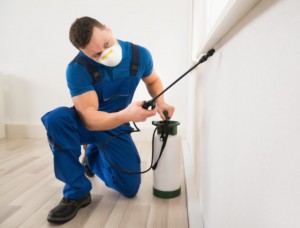It’s a tough real estate market out there, for sellers at least.
For cashed up buyers, it’s a dream come true.
In many parts of Australia, the market is flooded with properties for sale, which means buyers have variety, time and bargaining power on their side.
 It’s enough to make a seller’s heart sink.
It’s enough to make a seller’s heart sink.
With ‘for sale’ signs an all too common sight these days, what can sellers do to achieve an optimal sale price for their property and quickly win the hearts of buyers?
We’ve come to the rescue, with nine clever strategies to ensure you don’t have to massively reduce your selling price or watch your property languish on the market for months on end.
1. Setting the Price
One of the first and most important steps you’ll need to take is to set the asking price, or, if you’re selling at auction, the reserve price.
If you’re selling privately, your asking price will usually be considered a starting point for negotiations, and in a slow market you can expect to end up accepting an offer that’s lower.
 The key is to remember that your property is only worth what the market is willing to pay for it and there’s always a buyer if it’s priced right, so set emotions aside and price to sell!
The key is to remember that your property is only worth what the market is willing to pay for it and there’s always a buyer if it’s priced right, so set emotions aside and price to sell!
“It’s important to set a price that reflects the full market value of your property, yet is realistic and remains attractive to buyers,” confirms the Real Estate Institute of Australia (REIA).
The property’s location, size, age, features, and proximity to services and amenities will play a huge part in determining how much it’s worth.
“Searching the past property sales databases on the internet will give you a good indication of how much other homeowners are asking for their properties in your area.
But remember, these prices may not accurately reflect the price at which the homes are eventually sold,” says the REIA.
Economic and market conditions are other important factors to consider, with interest rate movements, buyer demand and real estate sentiment likely to influence how much people will pay.
If you aren’t confident that you can come up with a good estimate of how much your property is worth, you can either obtain a market appraisal from a real estate agent or pay for an independent valuation.Agents and valuers will inspect your home and let you know what they think it’s worth based on what the property offers, the area and recent sales prices achieved nearby.
Just be aware that some agents may overestimate the price of your property in an effort to win your business, so don’t automatically choose the agent who has valued your property the highest because it may not be achievable.
Make sure you get (real estate agents) to go over their analysis of the value of your home compared with what similar homes have been selling for,” advises the REIA.
2. Method of Sale
When it comes to selling your property, there are two popular methods to choose from: private treaty or public property auction.
 “Each has its own advantages and it’s advisable to speak to your agent about the benefits of each method,” says John McGrath of McGrath Estate Agents, however he favours auctions for properties located in the ‘top suburbs’ and also for properties that are difficult to determine the value of.
“Each has its own advantages and it’s advisable to speak to your agent about the benefits of each method,” says John McGrath of McGrath Estate Agents, however he favours auctions for properties located in the ‘top suburbs’ and also for properties that are difficult to determine the value of.
“Also, where a property is likely to attract more than one qualified buyer in the marketplace, auctions allow competitive bidding to increase the final sale price,” he says.
If you choose to submit your property for sale by auction — and some agents argue that it’s a risky way to go in a slow market — make sure you research the success of the auctioneer, as a skilled auctioneer can add significantly to your end result.
3. Presentation
This is an obvious one, but we have to mention it because how you present your property directly contributes to how buyers feel about it.
“This is similar to detailing a car before you sell it,” McGrath says.
“The emotional appeal required to stir the spirit of the buyers is unlikely to be generated by a poorly presented property and a neglected building sends out warning signals.”
He lists some of the turn-offs for buyers as:
 Animal odours in the house,
Animal odours in the house,- Evidence of damp or moisture in the walls,
- Cigarette or strong food smells,
- Doors, windows or gates that stick,
- Too much furniture or personal belongings cluttering the space,
- Cracked glass, and
- Stained carpet.
“Investing a little time and money upfront to get the presentation right can result in a $5000 to $50,000 upside in most instances I’ve seen,” McGrath says.
Presentation counts as two crucial stages of the marketing process, he adds.
“One, if your property looks fantastic in the photographs used for the advertising, more buyers will be enticed to inspect your home; and two, once they’re there, great presentation will help them feel good about your property and enable them to imagine themselves living there.”
He advises sellers to ask their agent for an objective opinion about what needs to be done to boost the property’s chances of a successful sale.
“The goal is to get the maximum price for your home while spending the least amount of money.”
4. Home Staging
Still on the topic of presentation…a property stylist can improve the appeal of your property by enhancing its appearance through ‘home staging’.
Home staging involves decorating and cleaning, but more importantly it’s about creating the right mood to make buyers want to purchase your property.
The idea is that it helps you achieve a higher sale price.
 McGrath says you don’t need to hire a stylist, although their expertise can be invaluable.
McGrath says you don’t need to hire a stylist, although their expertise can be invaluable.
“Styling costs range from $2000 to $10,000, depending on whether you hire furniture through them and so on,” he explains.
“If you’re interested, you can usually get an initial consultation and appraisal for a small fee.”
For vacant properties, as is often the case when selling an investment property, McGrath recommends the use of decorator furniture for the duration of the sale.
“The average cost to furnish a typical three-bedroom house for six weeks is likely to be in the range of $4000 to $6000 — in our experience an excellent investment in maximising the sale price of your property,” he says.
5. Timing
Buyers for good quality property can be found all year round, according to McGrath, however, there are some important points to consider.
 “If your property is located in one of Sydney’s beachside suburbs, our research indicates that the spring and summer months produce superior results, particularly October and February,” he says.
“If your property is located in one of Sydney’s beachside suburbs, our research indicates that the spring and summer months produce superior results, particularly October and February,” he says.
“In major centres avoid the Christmas holiday period between December 20 and January 10.
In tourist destinations, however, this same period can be the best time for the sale Of property.”
Sellers who accurately price their property can usually expect to have it on the market for between two and six weeks, says McGrath.
6. Supporting Documentation
There’s always a long paperwork trail when you try to sell a property, but did you know that some of it can actually improve your chances of a successful sale?
Why not Patrick display a building and pest report — and a strata search for units — at the open inspection.
 It shows you have nothing to hide and removes barriers to receiving offers, and it can speed up the transaction process.
It shows you have nothing to hide and removes barriers to receiving offers, and it can speed up the transaction process.
McGrath offers another benefit to obtaining a building and pest inspection report, saying that it allows you to have the necessary repair work done before the property goes on sale.
The contract of sale is another important document to have prepared properly for a happy and smooth sale.
Many are just thrown together by solicitors with the bare minimum information; many with missing information that a purchaser’s solicitor will be asking for at some point which will just slow the negotiation process down and can cause a hot buyer to go cold and put your property into the ‘too hard’ basket category.
7. Under Promise and Over Deliver
It’s important to be factual in the advertising you use to promote your property and, where possible, you should “under promise and over deliver in some way.
 In an industry that over promises all day long and seems to constantly under deliver, to make your property stand out, do the opposite.
In an industry that over promises all day long and seems to constantly under deliver, to make your property stand out, do the opposite.
For example, don’t overstate the property in the advertising and say it’s five bedrooms when one of the rooms is really only big enough to be a study, or don’t advertise a standard bedroom as a double size bedroom if it’s not.
A separate toilet is not a second or third bathroom or ensuite, it’s just a separate toilet.
Don’t advertise a private backyard if it’s not, or say ‘room for two cars’ if the truth is they’d only fit if they were minis.
8. Offer Something Extra
Including a piece of furniture with the property could be enough to cinch the deal if a buyer has to choose between two properties.
For example, if you had a really nice water feature or large TV mounted on the wall, just include that in the contract of sale to go with the house or apartment.
Not only will it make your property stand out, people will focus on the free TV over negotiating down to the last $1000, as these days you can buy one for that for your new home and you save on moving the old one.
9. Vendor Advocates
We’re all familiar with buyer advocates (or ‘buyer’s agents’) but what about advocates who work on behalf of sellers?
 Vendor’s advocates are a professional service that’s growing in popularity.
Vendor’s advocates are a professional service that’s growing in popularity.
Vendor advocates come at no additional cost to sellers, as their fee is taken out of the agent’s normal commission.
Vendor advocates can interview potential agents, establish sales objectives, oversee the entire sales campaign and act as the day-to-day contact between the agent and the vendor.
And a vendor advocate will provide advice on the most effective advertising for your property, which may not be the one-size fits-all model that benefits the agent’s own profile,” he adds
Fast and easy tips for a quick sale
Here are John McGrath’s top tips for enhancing the presentation of your property:
1. The facade
As they say, first impressions count.
 If a buyer’s first impression is bad, they’ll often look for reasons to back up that impression as they inspect your home.
If a buyer’s first impression is bad, they’ll often look for reasons to back up that impression as they inspect your home.
If their first impression is good, they’re more likely to look for reasons to b your property.
Also…buyers often do drive-by inspections and if your home street appeal isn’t great, they may simply cross it off their list.
Fading or peeling paint, dirty windows, grimy external walls, overgrown gardens and broken fences are major turn-offs.
2. Repairs and modern touches
Do a room-by-room inspection and make a list of all the little things that require attention.
Look for chipped paint, cracked tiles and stains.
If you’re repainting, go for light coloured neutral tones.
Replace outdated light fitting with modern ones to add a contemporary feel.
3. De-clutter
Clutter is the mortal enemy of good presentation.
Less clutter enables the true space of your home to be seen and appreciated.
Remove ornaments ant extra furniture — your agent can advise you on which pieces should go into Storage.
4. The garden/decks
 The garden and alfresco dining and entertaining areas are incredibly important selling features of your home.
The garden and alfresco dining and entertaining areas are incredibly important selling features of your home.
Many times, when I’ve been showing backyard they look around the garden and visualise themselves having barbecues and playing with the kids.
If you have a deck, remove any clutter and wash the outdoor furniture.
5. Cleanliness
Your home should be spotlessly clean for the inspections, especially the bathrooms and kitchen.
Sparkling windows are essential — they look great maximise the flow of natural light.
Pet smells are a major turn-off so clean and deodorise the carpet and furniture.
And here are some tips from the Real Estate Institute of Australia for open for inspection day:
- Clean up everywhere. That means inside cupboards, under beds etc. A few finishing touches to the garden can also make a difference, so rake up any fallen leaves and branches. You might put the sprinklers on to give the lawn a wet, healthy appearance (as long as buyers aren’t having to walk on it)
 Buyers are often concerned with how much light a home receives. Open curtains and blinds, and consider using some artificial lighting in dark rooms.
Buyers are often concerned with how much light a home receives. Open curtains and blinds, and consider using some artificial lighting in dark rooms.- Make sure your home feels comfortable. If it’s cold, heat the rooms, especially if you have an open fire. If it’s hot, make sure your home is cool.
- Put out fresh flowers, but don’t clutter the space with decorations. Everyone has different tastes and it’s difficult for a buyer to imagine the home as their own if it’s filled with your idiosyncratic style (this may mean storing away that collection of hubcaps!).
- A home which smells beautiful will seem more attractive to buyers. Make sure your home is properly aired out. Put out potpourri or bake something in the oven, but avoid incense or other strong aromas.
- Remove all your valuables.
- Don’t hang around the property during the inspection. You may get in the way of the agent and/or prospective buyers.
Editor’s note: This article was written by Eynas Brodie and initially published in Australian Property Investor Magazine in 2011. It was also published on Property Update with their permission but we’ve published it once again here for the benefit of our many new readers because our current property markets are very reminiscent of when this article was first published.
from Property UpdateProperty Update https://propertyupdate.com.au/9-ways-to-get-top-dollar-in-a-tough-market-and-fast/


No comments:
Post a Comment